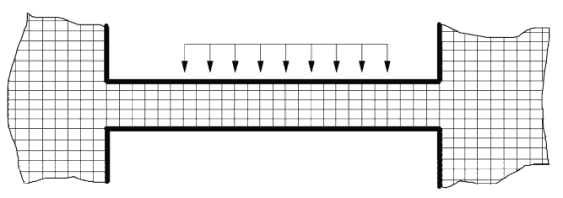Finite Elements Introduction
In Autodesk Structural Bridge Design a linear elastic finite element analysis can be carried out for any 'thin' shell structure. A shell is thin provided that shear deformation perpendicular to the shell can be neglected. Most concrete slab and bridge decks can be regarded as thin.
A complex engineering structure is divided into a number of small and simple components for finite element analysis. In Autodesk Structural Bridge Design these components must be either triangular or quadrilateral flat elements.
Examples
A simple flat plate structure
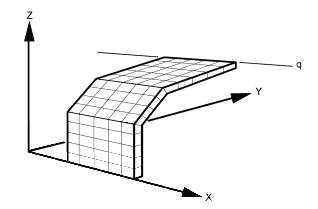
A concrete box girder bridge
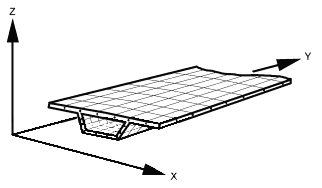
A triangular element connects three nodes while a quadrilateral element connects four nodes. The connection between finite elements is defined only by their nodes. Hence two elements are assumed to be joined edge to edge if both elements have a side between the same pair of nodes.
The deformation of a finite element, and hence the strain and stress within it, is determined solely by the displacement (translational and rotational) of its nodes. Consequently the deformation of an entire shell structure is expressed by the displacement of a finite number of nodes.
A flat thin shell finite element has two quite separate modes of deformation:
Membrane, caused by translation in the plane of the element:
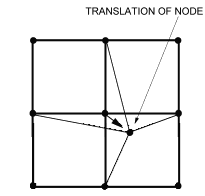
All element sides remain straight after deformation.
Bending, caused by translations perpendicular to the plane of the element, and rotations about axes in the plane:
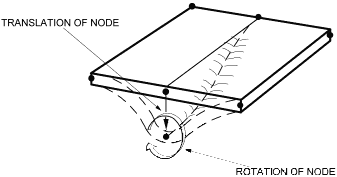
Connected element sides, in a bending element, have the same translation (a cubic curve) so that no gaps open between elements. Connected element sides must have the same rotation at the nodes. With the elements used in Autodesk Structural Bridge Design a slight crease is allowed between the nodes. In most circumstances with a well defined mesh, this has little effect.
Within most structures there is a complex pattern of deformation. Within each finite element the deformation is a simple function of the displacement of its nodes, so that large numbers of finite elements may be required to model the true deformation of the structure. The finite element 'mesh' should be finer in regions of the structure where the pattern of deformation is more complex.
If there is a sharp angle between adjacent finite elements, gaps may open as the structure deforms. In most circumstances good results are still obtained, but problems may occur with very thin elements.
This is discussed in the topic Special Element Properties.
Distributed loads can be applied over the surface of a finite element. These loads are converted into equivalent nodal loads using the element 'shape functions'. This procedure, which is analogous to the calculation of fixed end moments caused by in-span loads on beams, is described in standard finite element textbooks.

When a continuous shell is modelled using finite elements, nodes and FE edges are generally only modelling concepts and have no physical reality. Nodes can be placed anywhere within a continuous shell to define finite elements of a suitable size and shape.
The placing of nodes and division of the shell into finite elements which is shown here is perfectly valid and would give reasonable results. There is no requirement that finite elements should be regularly shaped. Nonetheless finite element models should avoid:
- Peculiarly shaped elements, (i.e. very long and thin, or four noded elements nearly triangular in shape).
- Abrupt changes in element size.
- The use of triangular elements in critical areas.
In a finite element analysis, the greater the subdivision of the structure the more accurate the results.
An engineer familiar with framework analysis should find few difficulties in preparing data for a simple finite element model. Beam elements and finite elements are two different types of 'model component' and in many circumstances they are treated in a similar way.
